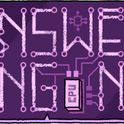Alexander Seifalian with the glass mould of a trachea built by his team at UCL © STELLA PICTURES
When a patient suffers from a malfunctioning internal organ, the best course of action can sometimes be to replace it. The ability to do this is not new—the first heart transplant was performed by the South African surgeon Christiaan Barnard in 1967. The first kidney transplant had taken place 17 years previously and a liver had been transplanted in 1963; but unlike the heart transplant these involved more straightforward procedures, without the complexity of reconnecting the patient’s cardiovascular system. Survival rates increased for heart transplants as the technology improved, but organ transplantation has always been hindered by the shortage of suitable donors. As a result the majority of people seeking organs never receive them. Even for those lucky enough to find donors, donated organs can sometimes be little better than those they are replacing.
But new research has promised to bring about substantial progress in replacing diseased organs—not with tissue taken from donors, but with organs grown in laboratories. Technology is helping scientists to construct tissue using new techniques and this material is then transferred into the patient. If these techniques are perfected, they may lead to a significant increase in the human lifespan and a profound change in the way that medical science confronts disease.
Problems with the availability of donor organs have, in the past, led to interest in alternative approaches such as manufacturing artificial organs and xenotransplatation from animals. However, these lead to a complex set of problems, such as the risk of infection and tissue rejection. An added complication is that artificial organs tend to lack the full functionality of the real thing.
However, scientists are now able to make new organs using a patient’s own adult stem cells. This will bring hope to the many people suffering from diseased organs who have little prospect of finding a suitable donor.
The potential of stem cells first became apparent just over a decade ago, following a series of advances. The key step was taken in 1981, when Gail Martin at the University of California, San Francisco, first isolated embryonic stem cells in mice. Following this breakthrough, the initial focus was on manipulating cells to regenerate tissue or organs in situ, rather than externally in the lab—“in vitro.” There was profound ethical alarm at these advances in stem cell science, because the first human cells that were used were embryonic stem cells: cells derived from discarded embryos that had been fertilised in the lab for use in fertility treatment.
But a breakthrough came in 2006 when Shinya Yamanaka, a Japanese researcher in Kyoto, found that normal adult cells could be converted into “pluripotent” stem cells, meaning that, in principle, they had the potential to generate all cell types. Yamanaka showed that through manipulating the genes within the cells, they would behave like stem cells.
The first tests were done on mice and were quickly replicated in humans. It soon became clear that this had huge potential. If it were possible in principle to take adult cells and induce them to become pluripotent stem cells, then all individuals effectively carried a limitless amount of raw material for regenerating their own organs and tissues. This would also sidestep the ethical issue surrounding human embryonic stem cells. And, since organs would be derived from the patient’s own cells, the risk of rejection or conflict with the immune system after transplantation would be eliminated or, at least, greatly reduced.
Yamanaka’s breakthrough led to a frenzy of research into the generation of tissue and organs using stem cells. Transplantation was also tested in animals, at first focusing on relatively straightforward hollow organs such as the trachea, or windpipe. The first opportunity to try the procedure out in a human came in 2008, when a Colombian woman suffering from a collapsed airway after severe tuberculosis faced the prospect either of having to breathe through a machine for the rest of her life, or of having her left lung removed. But then doctors presented her with the third option: of having a new, lab-grown trachea generated from her own stem cells.
Stem cells need to be given cues to develop into a windpipe rather than other tissue or organs, and in the case of the Colombian woman this could only be done by injecting her stem cells into an existing trachea “skeleton.” This meant that a donor was still required, but did not have to be alive—a cadaver was found as a donor.
Researchers from the University of Padua, the University of Bristol, and Politecnico di Milano took a section of trachea from the cadaver and removed the functional cells that could otherwise cause an adverse immune reaction in the patient, leaving only the cartilage, which was then “seeded” with stem cells. A new section of trachea grew in the laboratory in just over four days and was then transplanted into the left main bronchus of the patient. Because the stem cells were the patient’s own, it was unnecessary to administer immunosuppressive drugs, as would normally have been the case. The patient did not reject the trachea—the transplant worked. She is still doing well.
Other successful transplants of tracheas grown from patients’ stem cells have been performed since, and these have all used some form of scaffold. Stem cells respond to the geometry of their surroundings in order to determine how they are going to differentiate. If they are seeded onto a scaffold shaped like a windpipe, they differentiate into trachea cells. But this very useful characteristic of stem cells posed its own problem, in that a donor was still required to provide an organ for use as scaffolding. However, the skeleton’s function was to provide the right geometric cues rather than any direct biochemical signals. Drawing on this insight, researchers felt that there was no reason why it should not be made from some artificial material.
In 2011, a team led by Alexander Seifalian, professor of nanotechnology and regenerative medicine at University College London, discovered how to make an artificial scaffold using a glass mould. In order to obtain exactly the correct shape, Seifalian used X-ray computed tomography to generate a 3D image of the inside of the trachea. This image was then used to fashion a mould made out of glass, which was then populated with the patient’s stem cells, in this case, those of an individual from Sweden. This artificial scaffold appeared to work just as well as those derived from real organs and is likely to be more widely adopted because of avoiding the need for a donor.
The next step is to extend the lab grown techniques to the more complex solid organs, such as the heart, kidneys and liver.
Even though the kidney was the first solid organ to be transplanted between humans, it may be one of the last to be successfully generated in the lab. This is because it requires the simultaneous generation of multiple cell types to perform its filtering function. Many researchers are convinced that the liver will be the first solid organ to be generated from stem cells, because it already regenerates most of its own cells naturally. This means that a liver transplant does not have to involve a whole organ but could be just a fragment, which could then continue growing in situ to replace a diseased or failing organ. This has already been demonstrated in rats and pigs by a team under Alejandro Soto-Gutierrez at the University of Pittsburgh. There is now increasing confidence, expressed by Soto- Gutierrez among others, that the first human stem cell generated liver transplant will take place within a decade.
It will be much longer than that before the first whole stem cell generated human heart transplant. Mammalian hearts are incapable of the same self-regeneration as livers, but there is the prospect of transplanting patches to replace small amounts of damaged heart muscle. Often a heart attack destroys part of the organ, which therefore pumps less effectively than before and could benefit from replacement patches. A Spanish team at Hospital General Universitario Gregorio Marañon in Madrid has been testing this in pigs. The technique is fundamentally the same as for the trachea transplants, taking existing heart tissue for use as a scaffold, but more work is needed before human trials can begin. The main challenge is to make sure that the patches are synchronised mechanically and electrically with the rest of the heart, since all the cells have to act together in harmony for the heart to pump optimally.
Although these are early days it is just a matter of time before the transplant of simpler organs, generated from the patient’s own stem cells, becomes routine. The process of growing the organ in the lab seems surprisingly rapid and the main constraint will be the cost of the transplant operation. Even so, the potential of stem cell organ transplantation has already led to speculation that, in several decades time, a tipping point will be reached when it becomes possible to regenerate so much of the ailing human body that a significant increase in life span will be achieved.












